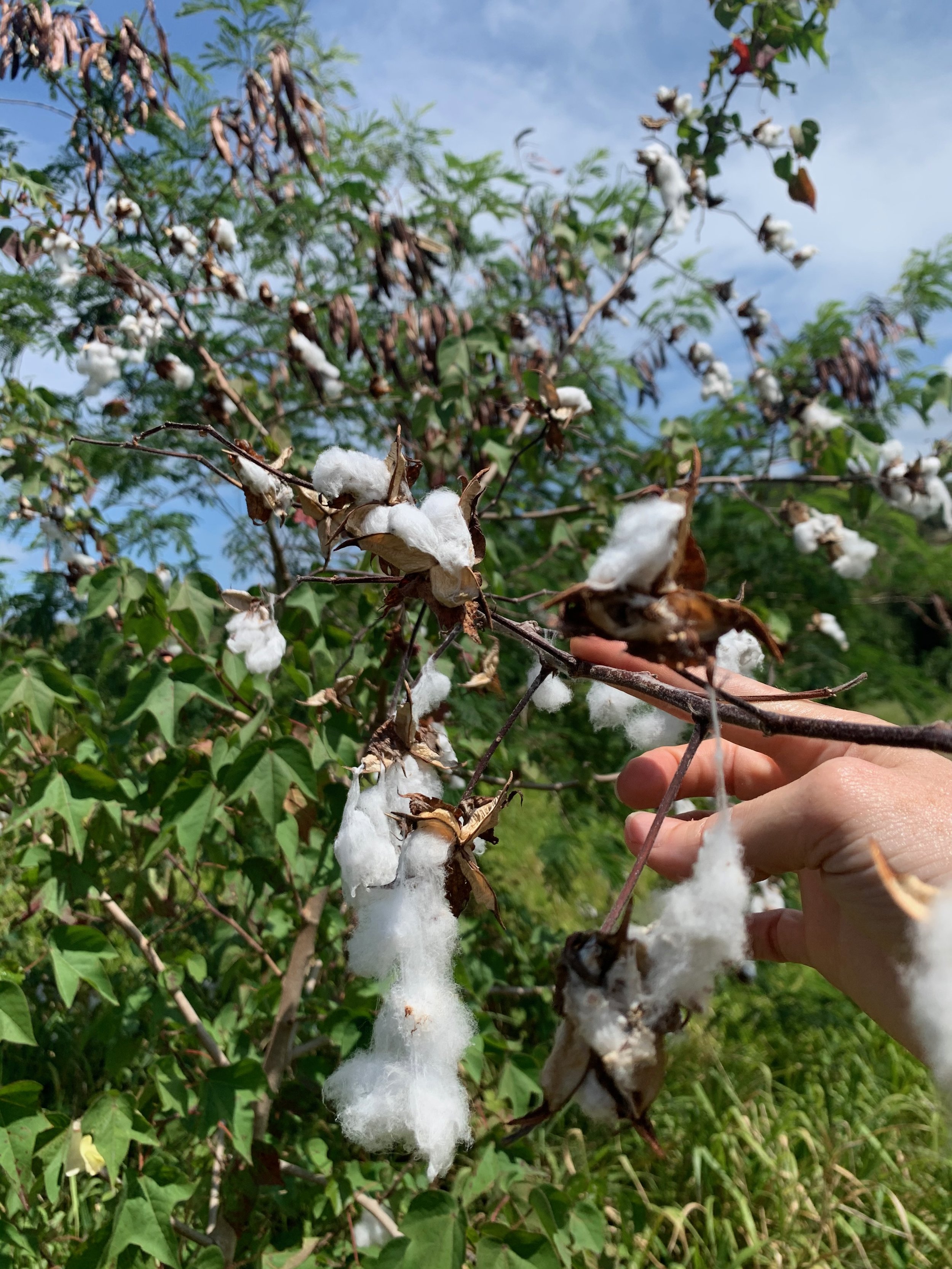Sea Island Cotton - Gossypium barbadense
Cotton pods open.
Sea Island Cotton has been grown in the Caribbean since the 15th century, before the arrival of Europeans to the ‘New World.’ Sea Island Cotton’s origins can be traced back to being cultivated on the coasts of southwest Ecuador and northwest Peru over 6,000 years ago.
This ancient plant has both medicinal and physical properties in our world and is deeply connected to subsistence farming across the Grenadines. During the pre-emancipation era, around 1829, Bequia boasted nine sugar plantations which constituted between 100 and 1000 acres. This included numerous smallholdings growing mainly crops like indigo and sugar with sea island cotton featuring widely across Bequia and Mustique due to its drought tolerant capacity. While many might think that growing and picking cotton is something in our very distant past, it certainly is not. Till the late 1950s, many families across Bequia cultivated and prepared sea island cotton for export. Families and communities across Bequia relied on cotton to supplement their income. Children were often tasked with picking cotton, separating seed from cotton while making sure the fluffy threads were kept white. Seeds were sent to be ginned at the cotton ginnery in Kingstown.
Sea Island Cotton covered with an insect.
Traditional uses of the sea island cotton are incredible and limitless. The leaves are used to treat high blood pressure, abdominal cramps, and menstrual problems. Seeds are used to ease diarrhoea and thrush. The root can be used as an abortifacient (abortion inducing) and to induce vomiting. An infusion of the root bark is used to treat difficult or irregular menstruation as it increases the flow of blood. The bark of the stem is used in preparation to strengthen the womb. Leaves of the red variety of Sea Island Cotton are used for treating the difficult delivery of afterbirth or placenta.
This powerful unassuming medicine does not stop there. An extract from the flowers can be used to treat ear inflammation and gossypol, which is an extract from the cotton, is used clinically as a male contraceptive.
Sea Island Cotton tree laden in Bequia

